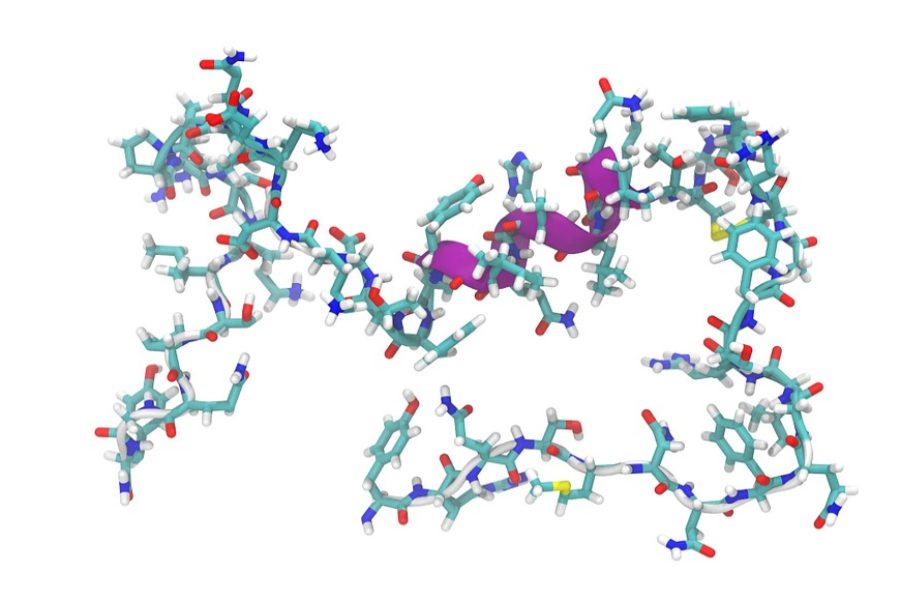
The peptide Thymosin beta 4 (TB4) is believed to occur naturally. There are 43 amino acids in total, and studies have suggested that they may be present in high numbers in many different types of cells, including platelets and lymphocytes. Thymosin beta 4 (or TB-500) is a brand name for synthetic Thymosin.
Thymosin beta 4 has been speculated to have the capacity to alter actin dynamics, a mechanism that may be important for cell mobility and structural integrity. It seems that biological functions like cell migration and tissue healing benefit greatly from this characteristic. Additionally, it is thought that Thymosin Beta 4’s possible protective role at the cellular level of cardiac cells is due, in part, to its potential to control inflammatory cytokines and, perhaps, decrease oxidative stress.
Stem cell differentiation and angiogenesis (the development of new blood vessels) are both regarded to be essential stages in the life cycle of cells, including cardiac cells, and research suggests that Thymosin Beta 4 may enhance both of these. Thymosin beta 4 has been hypothesized to interact with cardiac progenitor cells and promote their migration. Potentially accelerating heart regeneration is one possible outcome of this peptide’s potential impact on processes like cardiac cell proliferation and survival.
Thymosin Beta 4 Peptide: Mechanism of Action
Thymosin Beta 4’s methods of action are currently being investigated. Nonetheless, there are early clues as to its possible functionality. As an actin-binding protein, for instance, it may prevent the transformation of globular (G-) actin into filamentous (F-) Actin. Actin sequestration, the mechanism in question, may lead to increased G-actin levels. Actin, which seems to be a key component of the cellular cytoskeleton, including cardiac cells, may offer structural support to cells and is involved in several cellular functions, including cardiac cell motility, to aid in regeneration. Many researchers believe that the core actin-binding domain (aa 17-23), also known as Ac-LKKTETQ, is responsible for the majority of Thymosin beta 4’s actin binding.
The prospect for “significant roles in tissue development, maintenance, repair, and pathology,” including heart regeneration, is suggested by the research. Studies suggest the capacity of cardiac cells to move and change shape may be impacted by Thymosin Beta 4, which may impede F-actin polymerization by altering the cellular cytoskeleton. Scientists propose that potential avenues of research may include heart regeneration and other physiological and pathological processes in which cardiac cell motility plays a critical role. Keep in mind that these are only speculations about how intracellular Thymosin Beta 4 could operate.
Findings imply that extracellular (outside of cells) TB4 may also have positive impact in the heart. The potential of extracellular Thymosin Beta 4 has been studied in blood vessel cells and may govern processes, including cardiac cell motility and angiogenesis. Researchers speculate that the peptide may regulate these activities by interacting with ATP synthase enzymes on the cell surface. These enzymes are found inside cells and are thought to contribute to the creation of biological energy.
Investigations purport it may be possible that in inflammatory areas, extracellular Thymosin beta 4 is oxidized to Thymosin beta 4 sulfoxide, which is considered to have significant anti-inflammatory potential. It has also been hypothesized that microRNA-146a (miR-146a) expression might be boosted by Thymosin Beta 4, which could, in turn, lessen inflammation. Two pro-inflammatory cytokines, L-1 receptor-associated kinase 1 (IRAK1) and tumor necrosis element receptor-associated factor 6 (TRAF6), may be suppressed as a result of this. One of the most important factors in tissue regeneration is the suppression of inflammation and the promotion of cardiac cell motility.
Thymosin Beta 4 and the Heart
Studies in animals suggest that endothelial progenitor cells (EPC) may be able to stimulate heart regeneration, and the addition of TB4 seems to promote this process. Researchers hypothesized that EPC supplemented with Thymosin Beta 4 may have helped expedite cardiac healing and validated the presence of functional myocardium despite injury. This was probably because of the apparent activation of cardiac cell progenitors and its possible impact on cardiac cell motility. Thymosin beta 4 may have also aided in heart regeneration by lowering inflammation. It has been hypothesized that the peptide may lower ROS and lipid peroxidation while raising antioxidant levels. It may also block the activation of nuclear factor kappa B, reducing the production of pro-inflammatory cytokines and stopping the formation of fibrosis, as suggested by data. This undesirable regeneration process limits tissue function. These results point to a potential synergy between Thymosin 4 and cardiac reprogramming technology in reducing cardiac damage and increasing cardiac regeneration, maybe also via stimulating endogenous cells inside the heart.
Thymosin beta 4 seems to increase angiogenesis, which might lead to heart repair and may also enhance myocardial survival in hypoxic situations. Reprogramming cardiac fibroblasts into cardiomyocyte-like cells is another approach the researchers suggest. The scientists suggested that “Thymosin 4 and cardiac reprogramming technology may synergistically confine harm to the heart and facilitate cardiac regeneration through the impulse of endogenous cells within the heart.” Research in animal models of coronary artery ligation suggests that cardiac presentation of Thymosin Beta 4 may increase early myocyte survival and, ostensibly, cardiac performance via upregulating integrin-linked kinase (ILK) and protein kinase B activity. Furthermore, the researchers hypothesized that “Thymosin Beta 4 stimulates myocardial and endothelial cell migration in the embryonic heart and retains this property in postnatal cardiomyocytes.”
Buy peptides with a credit card from Biotech Peptides if you are a scientist interested in acquiring these compounds for research purposes only.




















